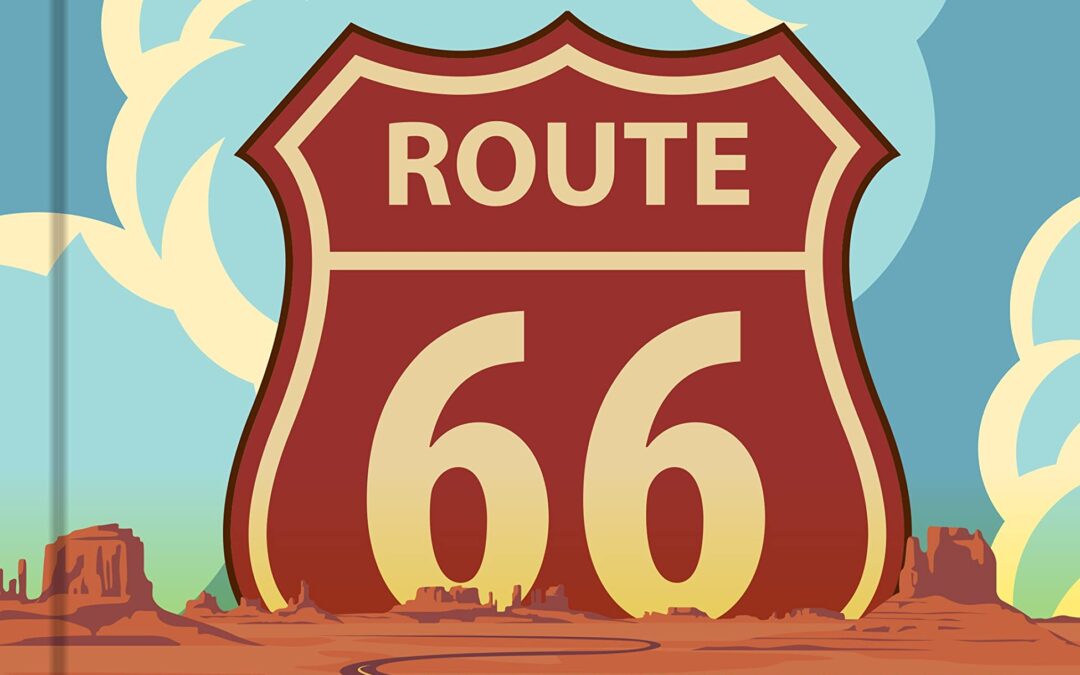
Here We Are . . . on Route 66 explores and celebrates iconic landmarks and cultural touchstones associated with America’s most famous highway—and guides you to some lesser-known gems just off the beaten path.
Spanning nearly 2,500 miles and eight states—Illinois, Missouri, Kansas, Oklahoma, Texas, New Mexico, Arizona, and California—America’s Main Street has given rise to a colorful assortment of roadhouses, motels, greasy spoons, roadside amusements, and breathtaking natural scenery. Acclaimed Route 66 historian Jim Hinckley is your guide to a carefully curated selection of these sites, ranging from the iconic to the revelatory.
Arranged by classic Route 66 topics, each spread gives you a different 66 site or attraction, along with a concise and authoritative history illustrated with colorful photography, evocative historical imagery, and collectibles like postcards, ads, and more. Topics of organization include:
- Towns and Cities
- Natural Wonders
- Roadside Attractions
- Eateries
- Motels and Hotels
- Music, Film, and TV
Hinckley is perhaps the most internationally recognized authority on the subject of America’s Main Street. This collection offers you the stories behind Route 66 icons such as Baxter Springs and Tucumcari, Meramec Caverns, Arroyo Seco Byway, Berghoff’s and the Oatman Hotel, Munger Moss and Wigwam Motel—and dozens more. Hinckley also treats you to a fresh look at lesser known but deserving attractions too.
At nearly a century old, Route 66 remains the embodiment of the classic American highway. Written by an acknowledged authority on the subject, wonderfully illustrated, and presented in a manner that allows you to dip in and out, Here We Are . . . on Route 66 is a must-have for your Route 66 bookshelf.

When you open Strange 66, take a look beyond the all-American sheen to the seedy, creepy, and just plain weird stories behind America’s Mother Road.
Route 66 conjures images of an innocent golden age of car travel: shiny V8s powering down hot, two-lane blacktop, sucking 20-cent-a-gallon gasoline, and periodically depositing their occupants at mom-n-pop greasy spoons, neon-lit motels, and tourist traps. But America’s Mother Road wasn’t all about ruddy-cheeked, summer vacationers. Route 66 and the regions it traverses have a side more seldom seen, rich with weird tales (mimetic architecture, paranormal phenomena, and even cryptozoology) to the downright sordid and seedy (murder, mistreatment, and other assorted mayhem).
In Strange 66, bestselling Route 66 authority Michael Witzel explores the flip side of Route 66 to offer details on infamous Route 66 locations that once served as hideouts for the James Gang (Meramec Caverns), Bonnie and Clyde (Baxter Springs, Kansas), and Al Capone (Cicero, Illinois).
There are the stories of unspeakable crimes committed along 66, such as the Stafflebeck “murder bordello” in Galena, Kansas, and Ariziona’s “Orphan Maker of Route 66.” Witzel also explores the people that passed through the region, including the Dust Bowl exodus and the Trail of Tears tribute in Jerome, Missouri.
Then there are the lighter, though still strange stories, such as the Route 66 Great Transcontinental Footrace and the origins of various roadside colossi, like the Blue Whale of Catoosa and Giganticus Headicus in Walapai, Arizona. And speaking of heads, what about steak? Eat one as big as your head at the Big Texan in Amarillo—and it’s free!
All of these stories culminate in a look at Route 66 unlike any other, completely illustrated with modern and archival photography and written by an acknowledged authority on the Mother Road.
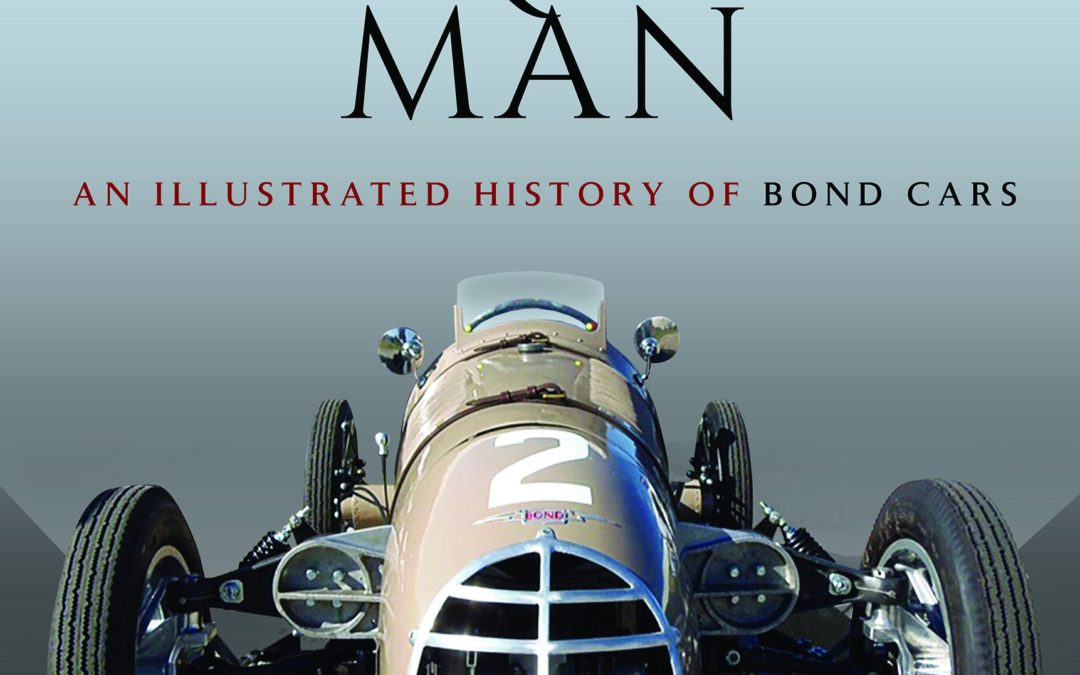
Once a common sight on Britain’s roads, few people today seem to have heard of the Bond Minicar not a diminutive, gadget laden conveyance for the fictional 007 character, but a popular, practical, motorcycle-engined, three-wheeler that in the post-war austerity period, gave tens of thousands of people affordable personal transport at a time when conventional vehicles were beyond the reach of the average household. Yet whilst the later, mostly imported, ‘Bubble cars’ have remained in the public eye, it is largely forgotten that the first of the postwar ‘Microcars’ to go into significant production was the British designed and built Bond.
Equally enigmatic seems to be the designer of this vehicle, Lawrence ‘Lawrie’ Bond a prolific automotive design genius, with a penchant for weight-saving construction techniques. He was responsible for a wide range of two, three and four wheel vehicles; from ultra-lightweight motorcycles and scooters, such as the Minibyke, Lilliput and Gazelle, as well as his other Microcars the stylish Berkeley and perhaps less-than-pretty Opperman Unicar and finally to his later work, including the innovative, but troubled Bond 875 and styling the Equipe GT sportscar.
Here the story is told in full, covering all Lawrie’s innovative designs and the various vehicles that bore his name, all in prolifically illustrated detail, together with his passion for motor racing, which resulted in a number of technically acclaimed racing cars, some of which can still be seen competing is historic racing events today.
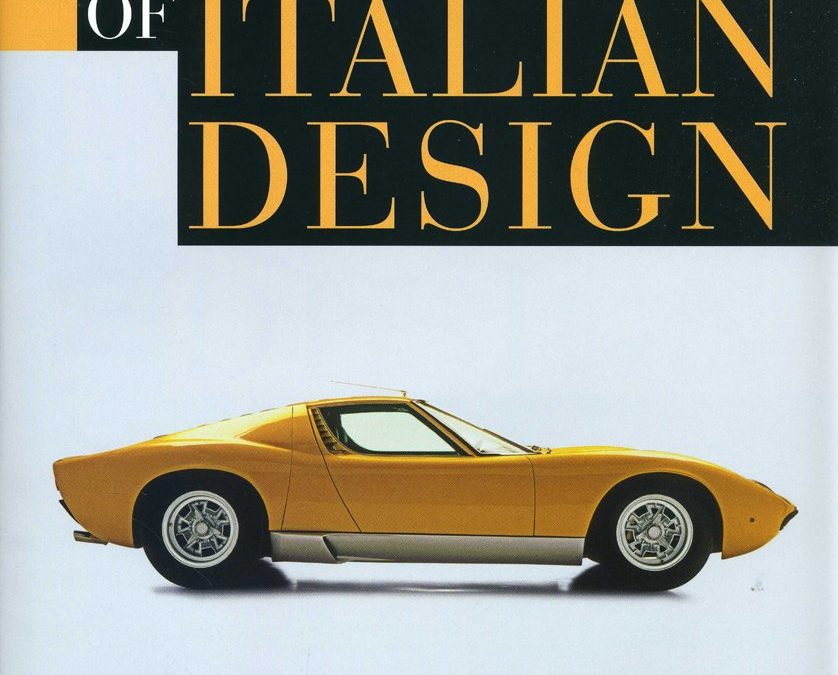
Design in Italy has always reflected the national identity of the Italians themselves: sexy, stylish, and innovative, and with more than a touch of audacity. No other country takes design so seriously, nor treats its leading practitioners with such reverence. In Italy a design is never just a product, but an expression of culture. There is a strongly held belief that good design should be implemented across all aspects of life, or as the architect Ernesto Rogers put it, “from the spoon to the city.”
Masterpieces of Italian Design is an overview of the past two centuries in Italian design and manufacturing. This new title documents the 100 most pioneering designs to come out of Italy, and explains why, with stunning images (including rare archival photographs, illustrations and patent drawings) and explanatory texts.
The Italian design community is at the forefront of modern design practice and has pioneered many styles and movements, from Rationalism to Post-Modernism and Late-Modern. With its strong design-engineering focus, highly skilled craft workshops, and specialized factories, Italy has always provided the optimum creative climate for designers and manufacturers. This major new book features the ultimate examples of Italian design from among others Alessi, B&B Italia, Cappellini, Cassina, Ducati, Ferrari, Fiat, Kartell, Lamborghini, Luceplan, Magis, Moroso, Pagani, and Riva.

Climb inside these stunning muscle car drop-tops, straight from the classic era of American high-performance cars!
Today’s rarest, priciest, and most highly sought-after muscle cars are also the least practical. These are the striking convertibles of the 1960s and 1970s that were optioned out for drag racing. Wide-Open Muscle showcases these rare cars and proves that sometimes it pays to throw practicality out the window in order to make something purely cool and fun to drive.
At the peak of drag racing popularity, it was common knowledge that racers needed the lightest, most rigid-framed cars available. Convertibles represent the exact opposite of that description, so it’s amazing that these drop tops ever emerged amid the circle of full-throttle dragsters. While typical convertible drivers cruised around listening to the latest Lovin’ Spoonful release in the eight-track tape deck, these muscle-car convertibles were equipped for rock ‘n’ roll speed. These topless muscle cars are so rare because few people had the dedication (or money) to buy a vehicle this impractical. They’re valuable because they represent the absolute extreme of the entire muscle-car genre.
Wide-Open Muscle celebrates these rare and fantastic cars in studio portraits using the light-painting process perfected by author Randy Leffingwell and photographer Tom Loeser. It is the ultimate portrayal of the ultimate muscle cars.
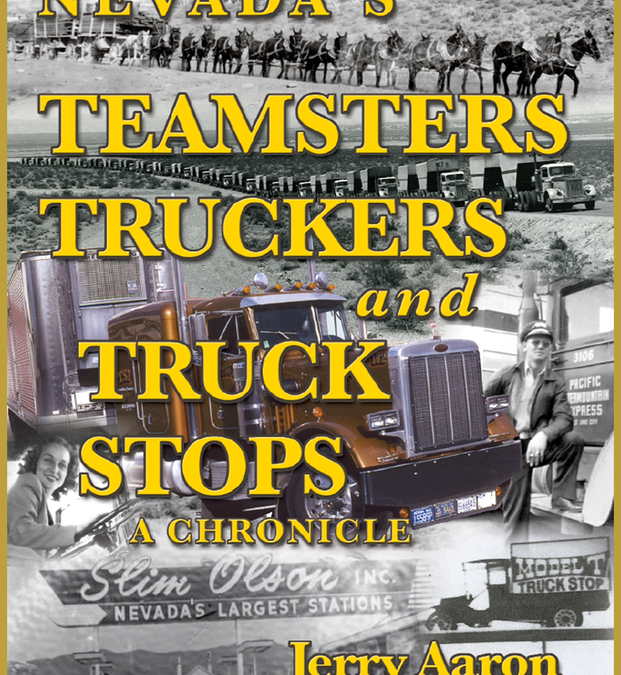
This chronicle of trucking in the Silver State begins with the Teamsters of the late 1800s and follows the transportation trail as it progressed from bullwhacker to throttle jockey. For truckers and non truckers alike it provides an insight into the building of Nevada-based trucking companies along with those folks that provided food and fuel. It is a narrative of early trucking and some strong willed people that worked hard to make their living over and along the roads and highways that traverse Nevada’s high desert. Some business owners would expand and continue as part of today’s Nevada trucking industry, while others remained small or disappeared into antiquity.
In the minds of old-school truckers, it will evoke memories of their time behind the wheel and the camaraderie between the drivers of their day. The modern-day trucker will come away with an understanding of how the trucking industry evolved, not only in Nevada, but across the country. It tells of the times when truckers were respected and their trucks received the full service treatment at the fuel islands. It recalls a time when drivers ate in little greasy spoon cafés and filled their bellies full of cholesterol before it was taboo and when black coffee was their energy drink.
The book will place the reader in the cab of a trucking time machine that covers over a hundred and fifty years of Nevada’s transportation industry. Come and ride along the roads of the past with hardworking teamsters and truckers. Sit on a stool at a truck stop run by those special and sometimes eccentric people who chose to cater to the travelers of an earlier time in remote areas of Nevada. As you open the pages of this book, over 200 hundred photographs will bring to life the stories as your adventure unfolds.
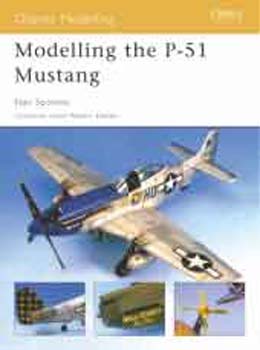
The North American P-51 Mustang had a humble genesis as a British request for single engine escort fighter. The projects in the book take the modeller from the aircraft’s beginnings to the ultimate manifestation of this elegant and deadly bird, the F-82 G/H Twin Mustang. The North American P-51 Mustang had a humble genesis as a British request for single engine escort fighter. “Dutch” Kindelberger’s North American design team created, in just six months, a prototype that would become, arguably, World War II’s most important fighter aircraft. The aircraft was designed around the innovative laminar flow wing, which resulted in a much more efficient flow of air across the top of the wing, thereby reducing drag and increasing range. Modelling is the perfect format to appreciate this revolutionary design feature which created a highly maneuverable plane with excellent range.
This book pays attention to the crucial details and methods needed to model the Mustang, at differing skill levels and with unique finishing tips and styles – showing the benefits of scratch built components, all illustrated in a clear concise and easy to use manner.
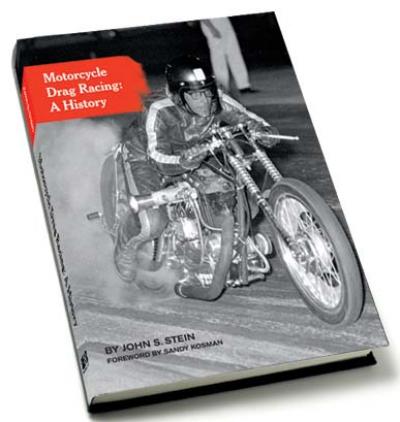
“There is a line in a Lovin’ Spoonful song that says, “”It’s like trying to tell a stranger about rock ‘n roll.”” Motorcycle drag racing is a bit like that. To those who follow it, the sport makes perfect sense. To those who don’t, it makes none at all. This book is for both.
At 244 pages and nearly 3 pounds, this book is quite large. With so much to explore, it had to be. Organized motorcycle drag racing began nearly 60 years ago, and an incredible amount has happened since then..
While much of the change has involved the machinery-and the book discusses it in great detail – it is the people that make the sport so fascinating. And in the book, more than 500 of them are discussed.
.
In the words of former Cycle editor, Cook Neilson, “Stein gives dimension and warmth to the people who built and rode these bikes, some of whom are still banging their heads against the quarter-mile reality. Clem Johnson. Sonny Routt. Boris Murray. John Gregory. Leo Payne. Byron Hines. Joe Smith. Dozens more. Geniuses all, innovators all. John Stein has done them – bikes and men – proud.”

Inspired by his intense love of cars, animals and creativity, Big Book of Wacky Rides by Fireball Tim is a mad-cap take on inanimate objects transformed into cool cars. Each illustration stands on its own as an amusing story, delighting children and parents around the world.
From the Olympic “Spoonster” to the “Snot Rocket,” these wild and wacky rides take kids of all ages on a journey of the imagination and unique design exploration.
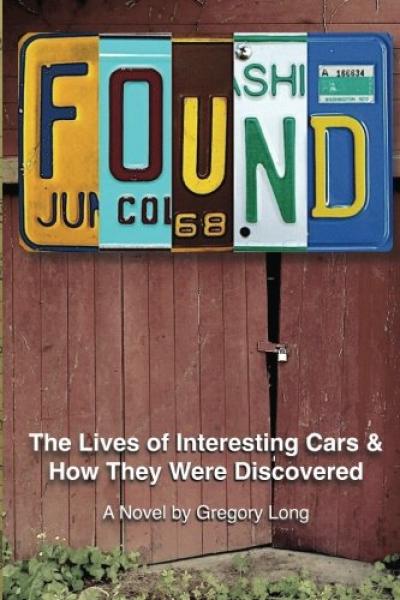
Tanner has the habit of stopping at every dilapidated garage, warehouse, or barn he comes across: What could possibly be lurking inside? A ’66 Shelby, ’32 Bugatti or clapped out ’77 Mercury Bobcat. An amazing friendship blossoms when a young car fanatic meets a seasoned collector after noticing his old BMW 2800CS parked at a local greasy spoon. Coffee turns into marathon conversations about amazing vintage cars, their colorful owners, and their own next chapters.
Motors and Motoring












